The best way to cook and clean Dungeness crab! Whether freshly caught or purchased from your favorite seafood shop or grocery store, this step-by-step tutorial will be your guide to processing your fresh crab. Do not miss the section on shaking. It will save you so much time!

I grew up in the Pacific Northwest and one thing we always did, and continue to do to this day is catch fresh Dungeness crab.
Now, I get to share that experience with my kids who also enjoy it.
We have had lot's of practice in preparing our crab and have tried many different methods over the years.
What I will be sharing below is by far the easiest and fastest way to process your crab.
Once you have all your crab meat, check out this hot and cheesy crab dip recipe or a creamy crab risotto, crab bisque or crab deviled eggs. Or simply lather it in the garlic butter sauce.
Get my entire collection of Dungeness crab recipes.
Jump to:
About Dungeness crab
Dungeness crabs are native to the Pacific Ocean. They can be caught off the coast from Alaska down to California. Dungeness have the most tender, sweet delicious meat that is full of protein and amino acids.
If you want to start catching your own crab, look into your local fish and wildlife department to get all the rules and regulations.
Here are the links for Washington, Oregon, Alaska, and California.
A few fun facts about Dungeness crabs.
- The more barnacles on the shell and legs, the better odds that your crab will be full of meat. When a crab molts, it sheds its shell, legs and other parts. Subsequently, they also lose most of their meat. Therefore, the crabs that have barnacles haven't molted yet, meaning they are full of meat.
- The average size of a Dungeness crab is 6-7 inches across the shell, weighing in around 1.5 to 2 pounds. You can get about .25 pounds of meat from a 6 inch crab.
- Some Dungeness will get as big as 10 inches!
- They are named after the Dungeness Spit in Washington State.
- Their claws and legs will regrow. A lot of times crabs will loose their claws or even a leg and will regrow a new one in its place.
- They are a purple and brown color when fresh and alive and turn a bright orange color once they are cooked.
Cooking Dungeness crab
This process will be the same whether you have a live crab or an uncooked whole Dungeness crab that has been frozen.
Some people like to freeze their crab raw and cook the day they plan to eat them. Be sure to let your frozen crab thaw in the fridge before cooking.
Do you clean the crab before cooking?
We have tested cleaning the crab before cooking and after cooking.
We have found that cooking the crab first and cleaning afterwards to be a lot easier. The body is much easier to clean after it has been cooked.
You can absolutely clean them first and then boil. It is up to you and your preference.
Follow the same cleaning instructions below.
Cooking
Before cooking, place your crab on ice in a dark location like a bucket or cooler so it slows them down. This will make cooking much easier as they won't be able to move their claws and legs as fast.
Take a large burner with a large pot filled with water about halfway.
We prefer to cook ours outside on a portable burner. That way if it boils over it's not in the house.

Bring the pot to a rolling boil. You don't want the water to stop boiling when the crab is added. Make sure you have a good boil before placing the crab in.
If you have a smaller pot, cook one crab at a time. If you have a large stock pot or canning pot a few can be cooked at the same time together. Do not over crowd the pot.
Add in a few tablespoons of Kosher or sea salt and place crab in the large pot. Make sure they are fully submerged.
Cook for 7-8 minutes per pound. We cook around 15 minutes for a 6-7 inch crab.
Once done, the crab will become a bright orange color.
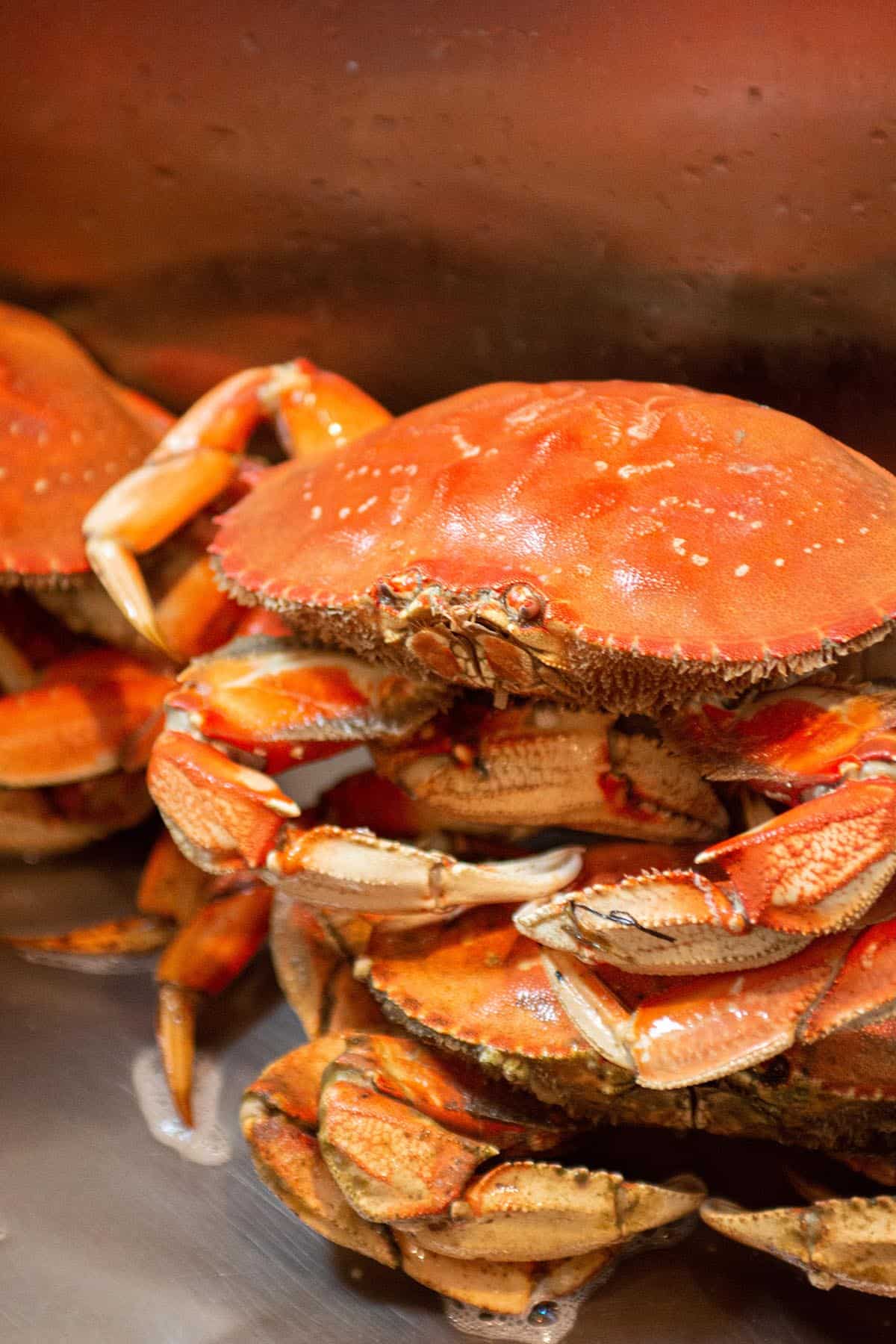
Carefully remove from the boiling water and place in an ice bath. This will stop the cooking process and cool it down to clean.

Once cool to the touch you can now clean your Dungeness crab.
You can also stop here and freeze the crab as is. See freezing instructions below.
How to Clean
If cleaning your crab inside, make sure you have a filter in your sink drain to catch all the pieces that get removed and washed out.
Take your chilled crab and start by taking off the top shell.
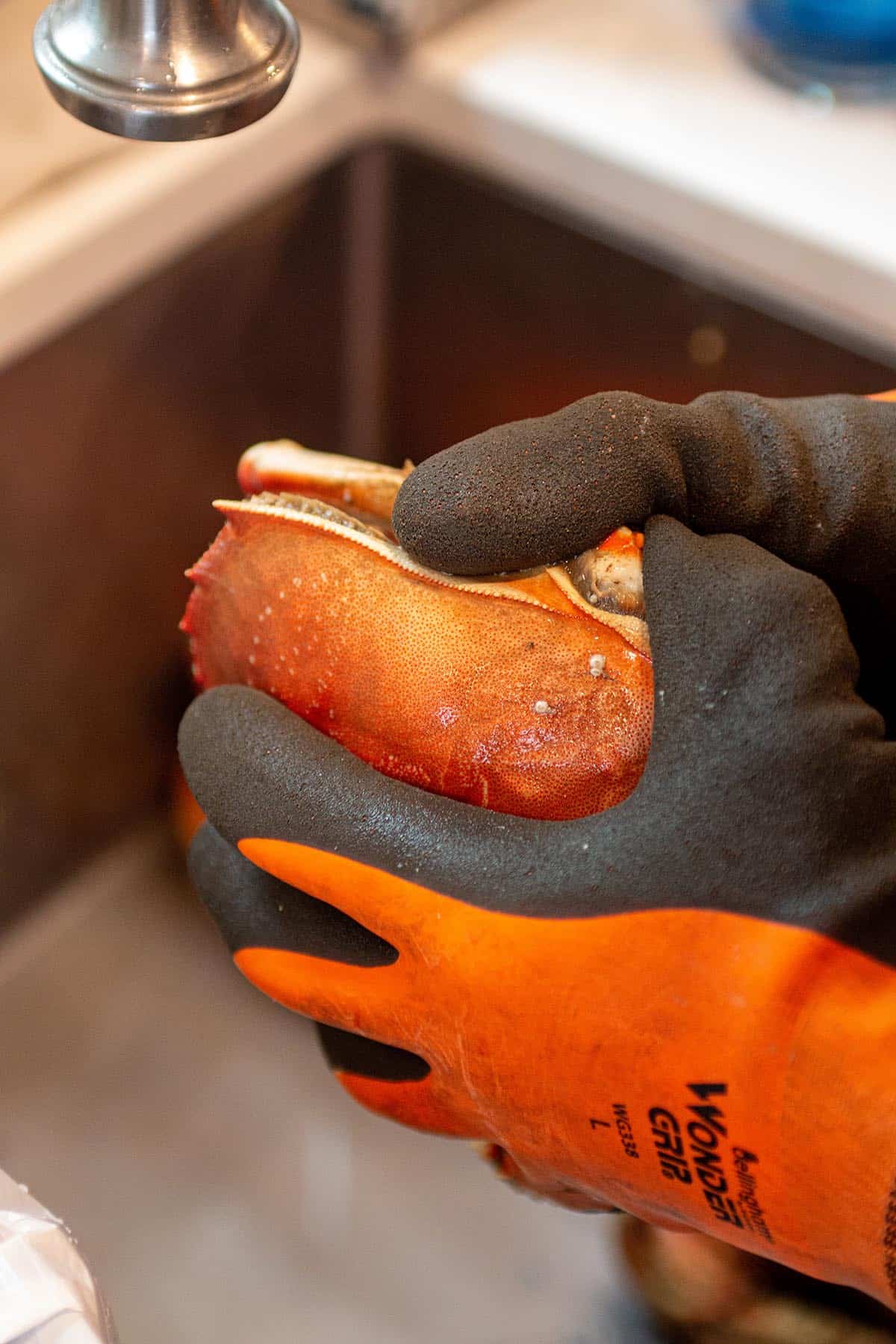
Hold down one side of the legs and gently peel away the top shell and toss.

Next, you're going to use your thumb and remove both ends of the body.
Removing both these pieces will make it easier to crack in half.

Take the mandible, which consists of its jaw, and peel it away.

Next, take the apron (or bottom) of the crab and break it off.
This is where the marking is that shows if the crab is a male or female.
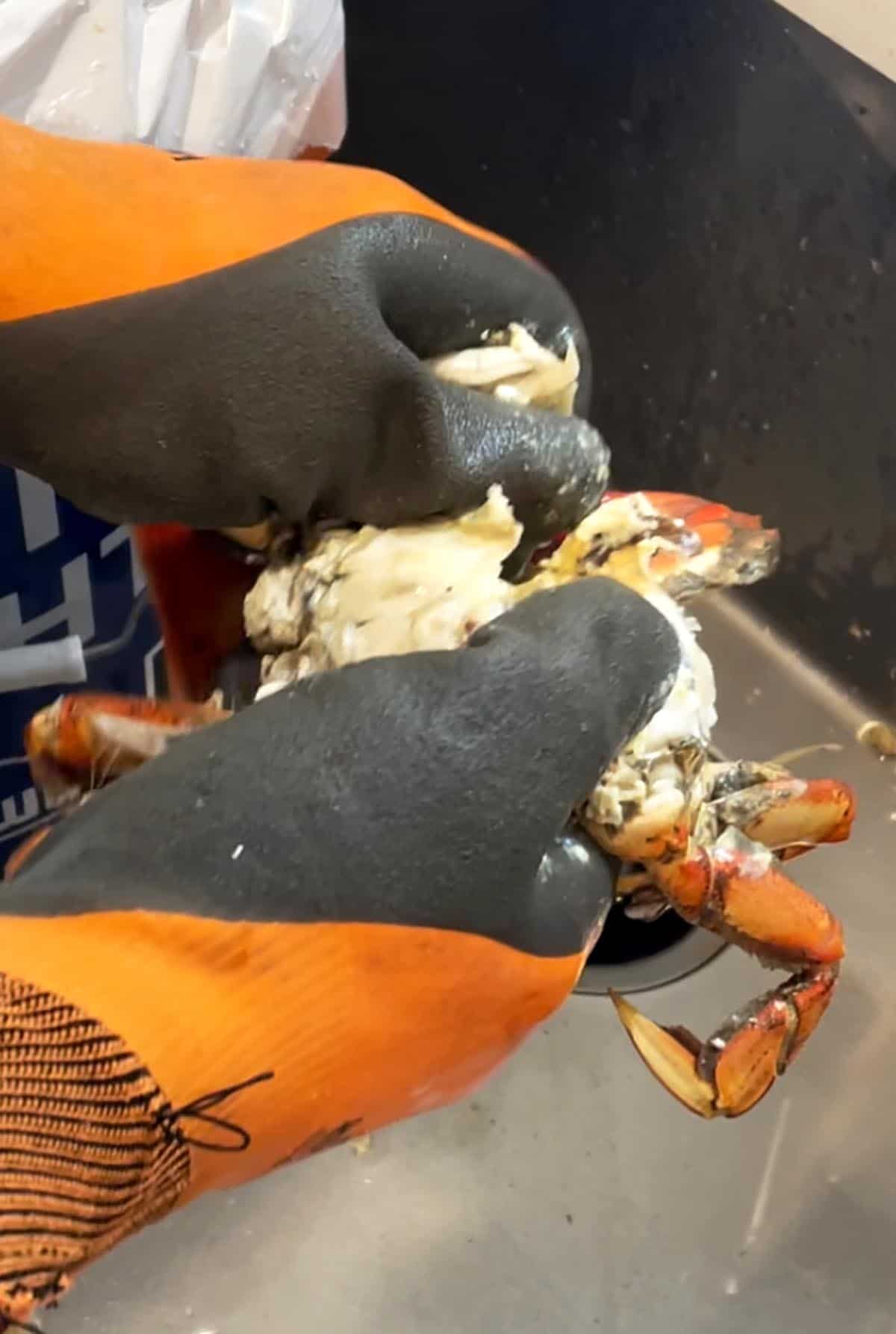
Scrape out the lungs on both sides.

Break the body in half and gently clean out all the lung butter/mustard (the yellowish orange stuff) with running water.
You can gently tap the body against a sink or other hard surface to help break it off.

Before cleaning.

After cleaning.
You should be left with two halves with legs and the body cavity filled with meat.
How to Shake
What I am about to share has absolutely changed processing crab for me! I used to painstakingly pick out every piece of crab. Not anymore.
I learned about this process from a local seafood market in Westport Washington, Merinos Seafood. This is how they prepare all their fresh crab, and now it's the only way I now prepare it.
What you will need:
- A thick-rimmed bowl. This is a bowl with a thicker outer edge. If it's too thin, the bowl can possibly crack.
- Crab crackers
- Crab pick or oyster shucker
Remove the Body Meat
Start with the body meat.
To get it out, start by squeezing the entire body cavity breaking up all that skeletal system.

Then, separate each leg making sure a piece of the body is still attached to each leg.
Each section will have some body meat.

Locate the joint of the leg, where the leg meets the body, and bang it against the rim of the bowl. The body meat should just fall right out.

Repeat the process with the remaining legs and claws, shaking all the meat out of the body.
Next, shake out all of the legs.
Legs
A crab leg is in four different sections. Each one is held together with a white tendon.
When shaking, it's important that when each section of the leg is removed, the tendon is removed with it.

That will make it much easier for the meat to fall out. If the tendon is still in place the meat will be stuck.

To shake the crab legs, start at the very end with the smallest piece.
Take the end of the leg and remove it, leaving the rest of the leg intact.

Take the crackers and gently squeeze the next section.
You don't want to do it too hard and damage the meat.
Peel away a piece of the shell.
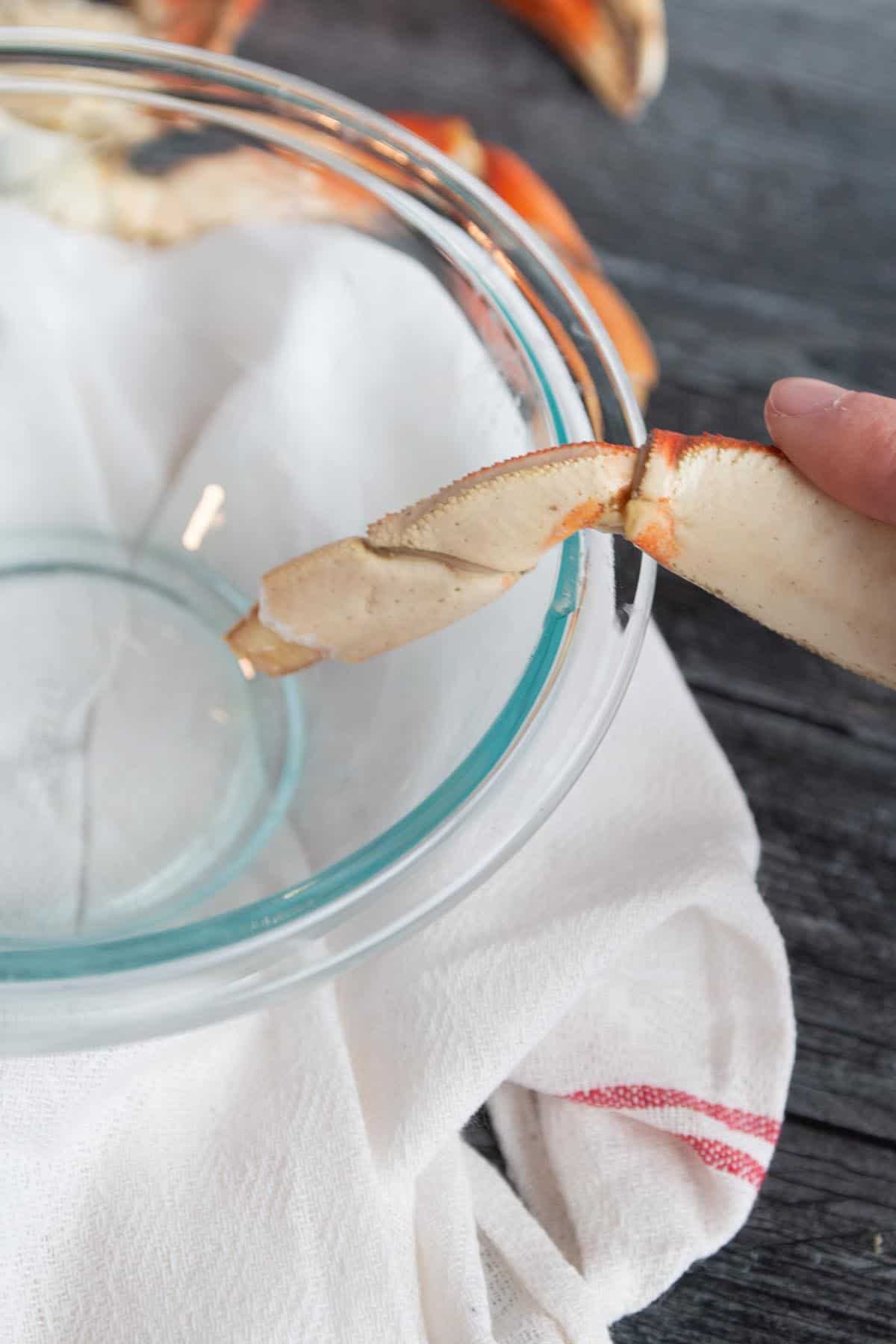
Take the closest joint of the section you are trying to shake out and hit it against the bowl.
The meat should just fall out into the bowl.

Repeat the process with each section of the leg. Make sure the tendon is removed each time.
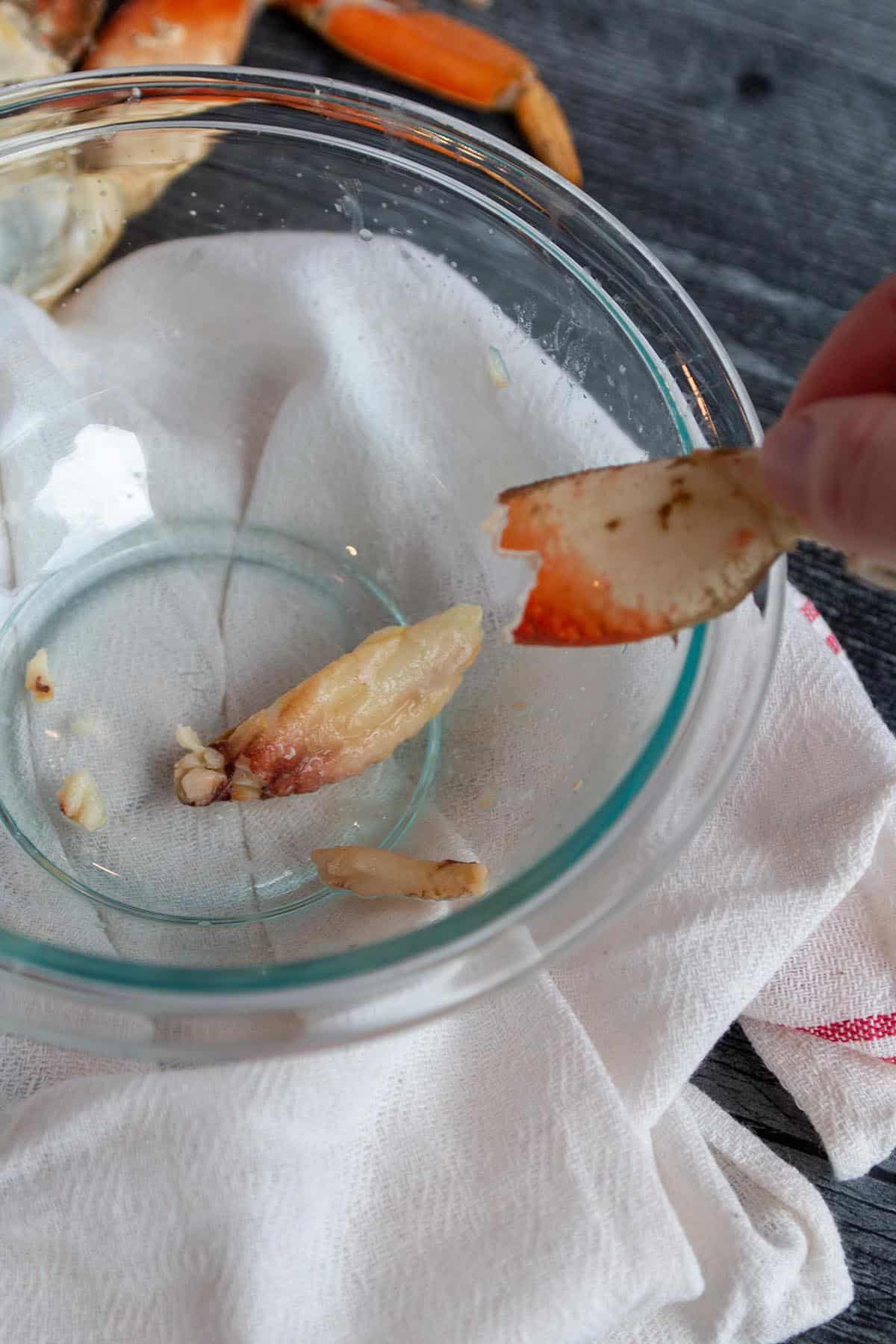
As you get down to the smaller back legs, some of the end sections may not have a lot of meat and could be harder to crack. That is when the crab pick or oyster shucker comes in handy.
Claws

Similar to the legs, each section of the crab claw also has the tendon.

Start by removing the moveable part of the pincher.
Again, a tendon should come out with it.
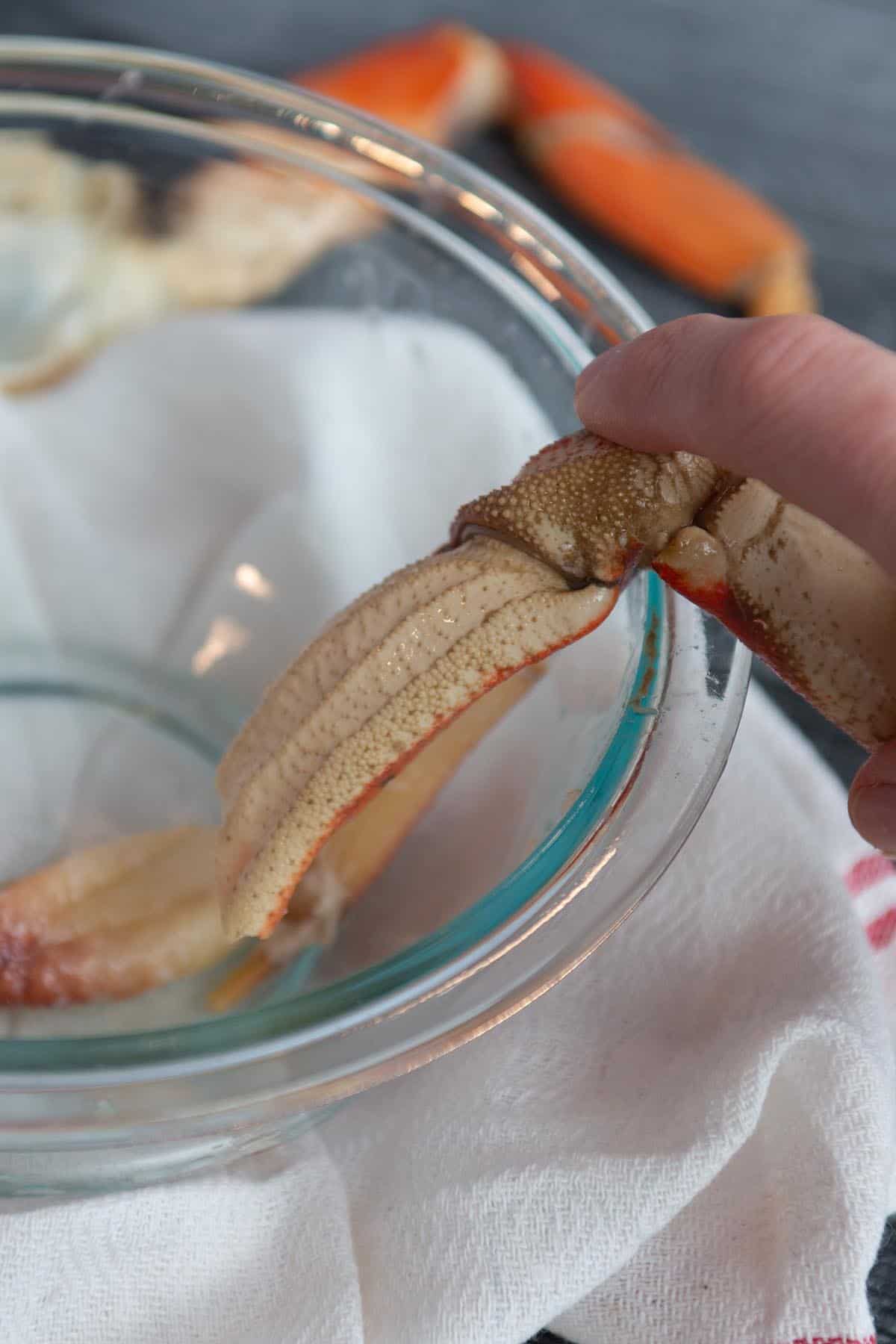
Gently crack the claw, remove a piece of the shell and hit the joint against the bowl.
Then, crack the knuckle and repeat.

The claw will have the toughest shell and will be a little bit harder to shake.
Now that your crab is completely shaken, you can use all that delicious Dungeness crab meat in your next recipe like hot crab dip! Or, just eat it with some melted butter and enjoy!
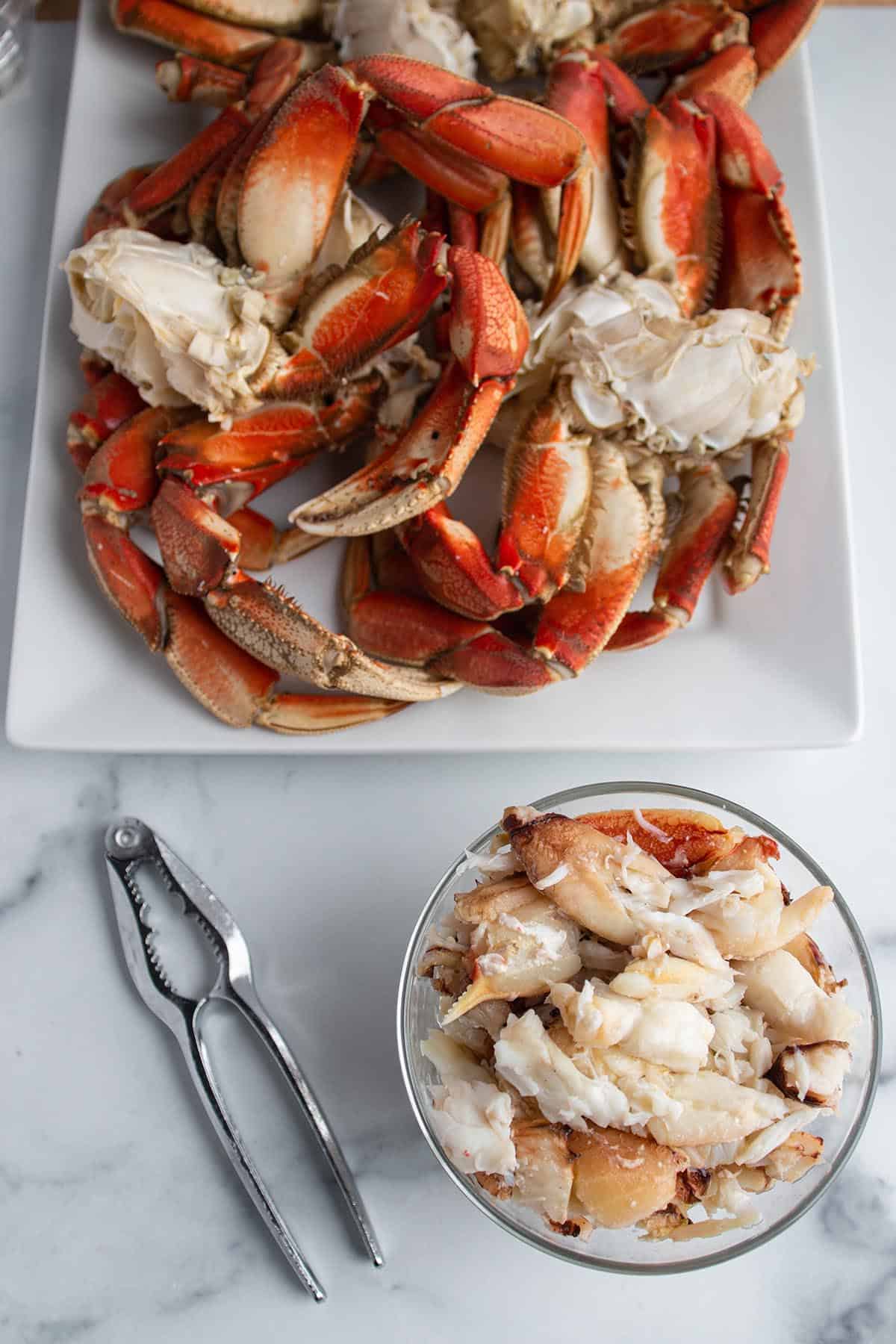
Can you Freeze Dungeness crab?
Yes! Dungeness crab can be frozen either whole or after the meat has been removed.
If freezing whole, cool the crab after cooking, then wrap in a freezer safe plastic wrap and store in a freezer safe bag.
When ready to eat, thaw in the refrigerator over night and then follow the cleaning and shaking process.
I prefer to process all our cab at one time so when we want to put a meal together, simply remove it from the freezer, thaw and enjoy!
Tools and Equipment
Outdoor Propane Burner: While cooking crab can be done on the stove top, we prefer to do it outside. Using a propane burner is a great way to cook larger amounts of crab. Do not use a propane burner in the house.
Large Stock Pot
Crab Crackers and Picks: These are great for cracking the shells and picking out any meat that gets stuck.
Vacuum Sealer: A vacuum sealer is a great way to store your Dungeness crab meat. If you find it difficult to get a good seal, try double bagging. We also find double bagging to be really effective in keeping the meat as fresh as possible.
Let's Connect!
Did any of these tricks work well for you, or did you learn something new? Share with us in the comments below. If you have a tried and true crab cleaning hack that I missed please also share.
Seafood Recipes
Get all my seafood recipes!
You must use the category slug, not a URL, in the category field.📋Recipe

How to Cook and Clean Dungeness Crab
Equipment
- Large Pot
Ingredients
- Dungeness Crab
- Water
- 1-2 Tablespoons Sea Salt - Depending on how many crabs
Instructions
Cooking
- Before cooking, place your crab on ice in a dark location like a bucket or cooler so it slows them down. This will make cooking much easier as they won't be able to move their claws and legs as fast.
- Take a large burner with a large pot filled with water about halfway.
- NOTE: I prefer to cook crab outside on a portable burner. That way if it boils over it's not in the house. I also cook multiple at a time and this is the fastest way.
- Bring the pot to a rolling boil. You don't want the water to stop boiling when the crab is added. Make sure you have a good boil before placing the crab in.
- If you have a smaller pot, cook one crab at a time. If you have a large stock pot or canning pot a few can be cooked at the same time together. Do not over crowd the pot.
- Add in a few tablespoons of Kosher or sea salt and place crab in the large pot. Make sure they are fully submerged.
- Cook for 7-8 minutes per pound. We cook around 15 minutes for a 6-7 inch crab.
- Once done, the crab will become a bright orange color.
- Carefully remove from the boiling water and place in an ice bath. This will stop the cooking process and cool it down to clean.
Cleaning
- If cleaning your crab inside, make sure you have a filter in your sink drain to catch all the pieces that get removed and washed out.
- Take your chilled crab and start by taking off the top shell.
- Hold down one side of the legs and gently peel away the top shell and toss.
- Next, you're going to use your thumb and remove both ends of the body.
- Removing both these pieces will make it easier to crack in half.
- Take the mandible, which consists of its jaw, and peel it away.
- Next, take the apron (or bottom) of the crab and break it off.
- Scrape out the lungs on both sides.
- Break the body in half and gently clean out all the lung butter/mustard (the yellowish orange stuff) with running water.
- You can gently tap the body against a sink or other hard surface to help break it off.
- Now enjoy your fresh dungeons crab or store, freeze and save for later. Freezing instructions in the notes below.





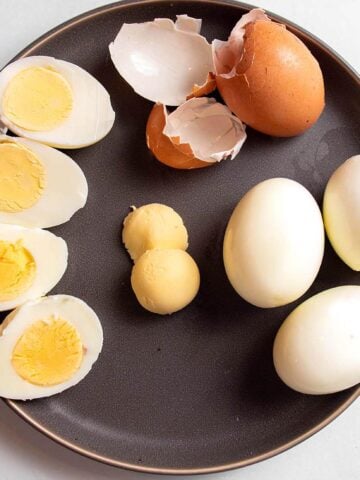
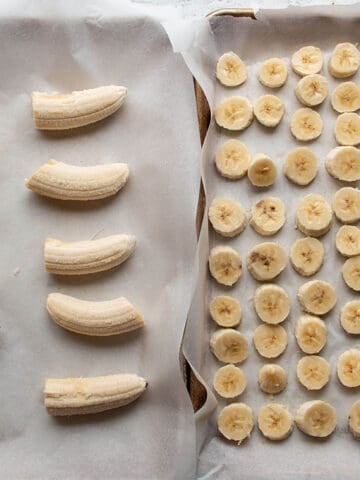

I much prefer cleaning the crab first. It's much quicker and cleaner also. It's faster to cook as you can fit more in the pot. Also the cooked crab doesn't have all the crab butter gunk to deal with. But everyone has their preferred method.
I typically prefer to clean first as well. I will have to admit though we cooked them first last time and cleaning was so much easier. Really both ways will get the job done.
Thank you for explaining the shaking process clearly! I recently heard about it and had seen a brief video, but didn't know the detail. My hands will thank you!
I'm so glad you found it helpful! It was a huge game changer for us when processing all our crab. Let me know how it goes for you.